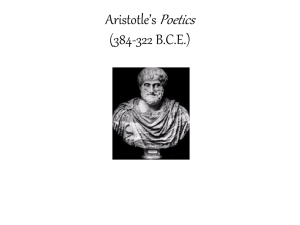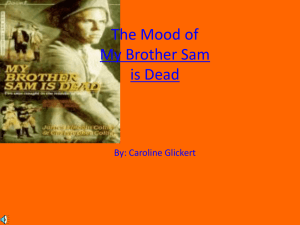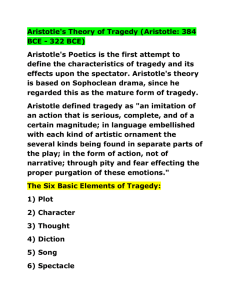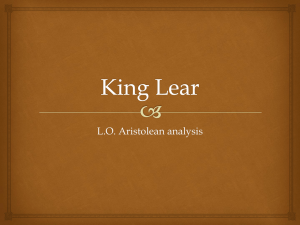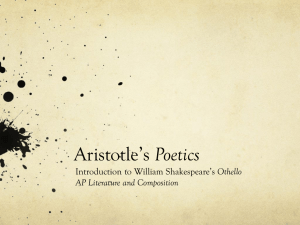Formalistic Approach: The formalistic approach began with Aristotle
advertisement
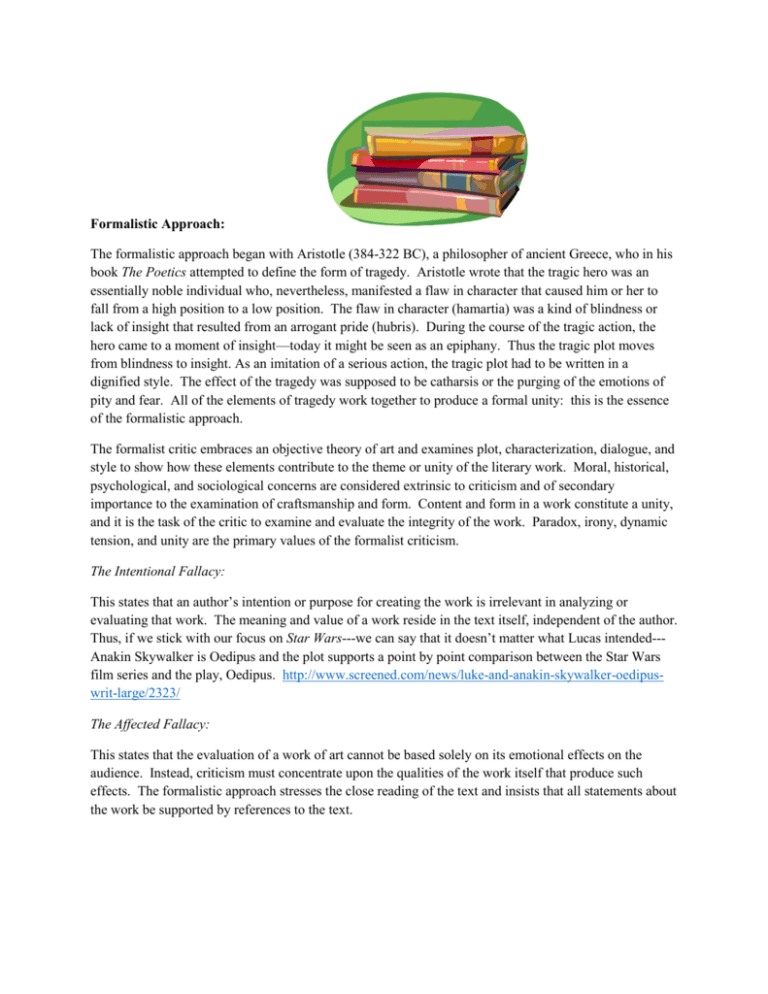
Formalistic Approach: The formalistic approach began with Aristotle (384-322 BC), a philosopher of ancient Greece, who in his book The Poetics attempted to define the form of tragedy. Aristotle wrote that the tragic hero was an essentially noble individual who, nevertheless, manifested a flaw in character that caused him or her to fall from a high position to a low position. The flaw in character (hamartia) was a kind of blindness or lack of insight that resulted from an arrogant pride (hubris). During the course of the tragic action, the hero came to a moment of insight—today it might be seen as an epiphany. Thus the tragic plot moves from blindness to insight. As an imitation of a serious action, the tragic plot had to be written in a dignified style. The effect of the tragedy was supposed to be catharsis or the purging of the emotions of pity and fear. All of the elements of tragedy work together to produce a formal unity: this is the essence of the formalistic approach. The formalist critic embraces an objective theory of art and examines plot, characterization, dialogue, and style to show how these elements contribute to the theme or unity of the literary work. Moral, historical, psychological, and sociological concerns are considered extrinsic to criticism and of secondary importance to the examination of craftsmanship and form. Content and form in a work constitute a unity, and it is the task of the critic to examine and evaluate the integrity of the work. Paradox, irony, dynamic tension, and unity are the primary values of the formalist criticism. The Intentional Fallacy: This states that an author’s intention or purpose for creating the work is irrelevant in analyzing or evaluating that work. The meaning and value of a work reside in the text itself, independent of the author. Thus, if we stick with our focus on Star Wars---we can say that it doesn’t matter what Lucas intended--Anakin Skywalker is Oedipus and the plot supports a point by point comparison between the Star Wars film series and the play, Oedipus. http://www.screened.com/news/luke-and-anakin-skywalker-oedipuswrit-large/2323/ The Affected Fallacy: This states that the evaluation of a work of art cannot be based solely on its emotional effects on the audience. Instead, criticism must concentrate upon the qualities of the work itself that produce such effects. The formalistic approach stresses the close reading of the text and insists that all statements about the work be supported by references to the text. The Formalistic Approach deals with the form of the literature, the words of the literature, and the patterns in the literature. Analysis of figurative language and rhetorical devices falls under the formalistic approach. Common Questions for the Formalistic Approach: How is the work’s structure unified? How do various elements of the work reinforce its meaning? What recurring patterns (repeated or related words, images, etc.) can you find? What is the effect of these patterns or motifs? Is the structure of the work similar to other well-known stories, fables, myths, etc.? How does repetition reinforce the theme(s)? How does the writer’s diction reveal or reflect the work’s meaning? What is the effect of the plot, and what parts specifically produce that effect? What figures of speech are used? (metaphors, similes, etc.) Note the writer’s use of paradox, irony, symbol, plot, characterization, and style of narration. What effects are produced? Do any of these relate to one another or to the theme? Is there a relationship between the beginning and the end of the story? What tone and mood are created at various parts of the work? How does the author create tone and mood? What relationship is there between tone and mood and the effect of the story?
